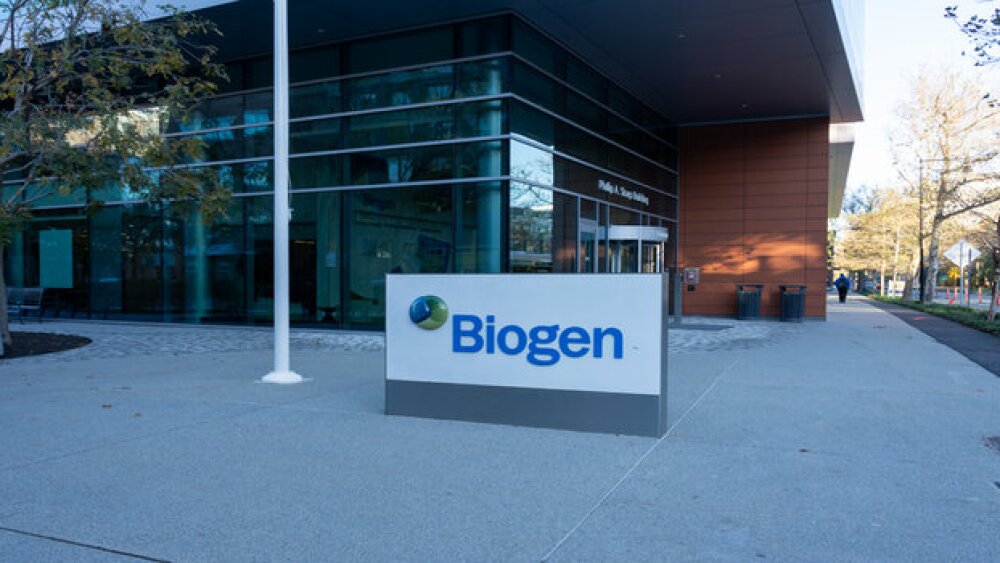Mallinckrodt plc, a global specialty pharmaceutical company, announced the presentation of three posters on TERLIVAZ® for injection in patients with hepatorenal syndrome with rapid reduction in kidney function1 at the 2024 European Association for the Study of the Liver Congress taking place in Milan, Italy from June 5-8, 2024.
Three posters highlight research on outcomes of TERLIVAZ treatment in key subpopulations of adults with HRS with rapid reduction in kidney function1
DUBLIN, June 5, 2024 /PRNewswire/ -- Mallinckrodt plc, a global specialty pharmaceutical company, today announced the presentation of three posters on TERLIVAZ® (terlipressin) for injection in patients with hepatorenal syndrome (HRS) with rapid reduction in kidney function1 at the 2024 European Association for the Study of the Liver (EASL) Congress taking place in Milan, Italy from June 5-8, 2024.
The posters include a retrospective chart review that examined the potential relationship of serum creatinine (SCr) levels and treatment outcomes in support of earlier diagnosis;2 data analyzing clinical response to TERLIVAZ in HRS patients with a mean arterial pressure (MAP) of <65 mm Hg;3 and the effect of TERLIVAZ on renal function among patients with alcohol-associated hepatitis (AAH) and hepatorenal syndrome-acute kidney injury (HRS-AKI) who had acute-on-chronic liver failure (ACLF) grades 0–2.4
TERLIVAZ is the first and only FDA-approved product indicated to improve kidney function in adults with HRS with rapid reduction in kidney function,1 an acute and life-threatening condition requiring hospitalization.5 HRS involving rapid reduction in kidney function1 is estimated to affect more than 42,000 Americans annually and rates of hospitalizations are increasing.6 Currently, TERLIVAZ is only approved in the U.S.
Please see Limitation of Use and Important Safety Information, including Boxed Warning, below.
“The posters being shared at EASL showcase the potential benefits of treatment with TERLIVAZ in several patient subpopulations where there is a significant need. We remain steadfast in our dedication to furthering our knowledge on the clinical outcomes for those affected by HRS and the role TERLIVAZ treatment can play for appropriate patients,” said Peter Richardson, MRCP (UK), Executive Vice President & Chief Scientific Officer.
Poster #SAT-320: Early diagnosis and treatment with terlipressin for adults with hepatorenal syndrome improves clinical outcomes and reduces healthcare resource utilization2
- Presenter: Dr. Juan F. Gallegos-Orozco
- Session Type: Poster Presentation
- Session Title: Acute Liver Failure and Drug-Induced Liver Injury
- Session Date and Time: Saturday, June 8, 2024; 10:00 – 10:08 a.m. CEST
This analysis used a decision-analytic model leveraging data from the CONFIRM trial and a medical chart review study from the United Kingdom to assess HRS patients across SCr groups at the time of HRS diagnosis to evaluate the potential impact of earlier HRS diagnosis and TERLIVAZ treatment.2 The model assessed on-label treatment (SCr levels <3 mg/dL or ≥3 to <5 mg/dL) with TERLIVAZ, and excluded those with SCr levels ≥5 mg/dL or those with grade 3 ACLF.2
In this analysis, earlier HRS diagnosis and treatment with TERLIVAZ was associated with a 3,040 greater HRS reversals, 960 fewer patients with renal replacement therapy (RRT) rate during hospitalization, fewer intensive care unit days, and a shorter overall length of hospitalization when compared to current clinical practice.2 The analysis further showed that a reduction in hospitalization could generate $11,504 savings/cost offset per person and a total annual national savings of $460.2 million in the U.S. (based on 2023 U.S. dollars).2
Poster #SAT-076: Patients with hepatorenal syndrome and lower baseline mean arterial pressure derive significant survival benefit from treatment with terlipressin3
- Presenter: Dr. Paul Yien Kwo
- Session Type: Poster Presentation
- Session Title: Cirrhosis and its complications: Portal Hypertension
- Session Date and Time: Saturday, June 8, 2024; 8:30 a.m. CEST
This analysis included pooled data from three Phase III, placebo-controlled studies of TERLIVAZ in patients with HRS with rapid reduction in kidney function and examined the clinical response from patients with a baseline MAP of <65 mm Hg (n=608).3 The rate of HRS reversal was 22.4% [11/49] in the TERLIVAZ group and 5.9% [2/34] in the placebo group (p=.041).3 The proportion of patients requiring RTT at Day 30 was 28.6% [14/49] in the TERLIVAZ group and 47.1% [16/34] in the placebo group (p=.085); at Day 60 was 30.6% [15/49] in the TERLIVAZ group and 47.1% [16/34] in the placebo group (p=.128); and at Day 90 was 34.7% [17/49] in the TERLIVAZ group and 47.1% [16/34] in the placebo group (p=.258).3
Poster #THU-074: Effect of terlipressin on patients with hepatorenal syndrome, alcohol-associated hepatitis, and acute-on-chronic liver failure grade 0–24
- Session Type: Poster Session
- Session Title: Cirrhosis and its complications: ACLF and Critical illness
- Session Date: Thursday, June 6, 2024
This analysis included pooled data from three Phase III studies of TERLIVAZ to assess the effect of treatment on renal function among the subpopulation of patients with AAH, HRS-AKI, and ACLF grades 0–2 (n=141).4
Change in renal function, measured as least squares (LS) mean changes in SCr from baseline to end of treatment (EOT) with and without interaction between treatment and day were –0.98 mg/dL and –1.02 mg/dL for the TERLIVAZ arms, and –0.35 mg/dL and –0.26 mg/dL for the placebo arms, respectively.4 The difference in LS mean change in SCr between the TERLIVAZ and placebo arms was –0.64 mg/dL without interaction, and –0.76 mg/dL with interaction between treatment and day (both p<.001).4
In the TERLIVAZ (n=84) and placebo (n=60) arms, the incidence of HRS reversal (defined as at least 1 SCr value of ≤1.5 mg/dL while on treatment by Day 14 or discharge) was 44.0% and 11.7% (p<.001), respectively.4 Incidence of RRT on Days 30, 60, and 90 were 24% and 25%, 26% and 27%, and 26% and 27% (p>.800 for all), respectively.4
Key Study Limitations
The safety and efficacy of TERLIVAZ within the study subgroups assessed in SAT-320, THU-074, and SAT-076 have not been evaluated by the FDA. The limitations of these studies include but are not limited to small sample sizes, variables in methodology and possible errors and omissions within the data sets.
These analyses were sponsored by Mallinckrodt Pharmaceuticals.
INDICATION AND LIMITATION OF USE
TERLIVAZ is indicated to improve kidney function in adults with hepatorenal syndrome with rapid reduction in kidney function.
- Patients with a serum creatinine >5 mg/dL are unlikely to experience benefit.
IMPORTANT SAFETY INFORMATION
WARNING: SERIOUS OR FATAL RESPIRATORY FAILURE
- TERLIVAZ may cause serious or fatal respiratory failure. Patients with volume overload or with acute-on-chronic liver failure (ACLF) Grade 3 are at increased risk. Assess oxygenation saturation (e.g., SpO2) before initiating TERLIVAZ.
- Do not initiate TERLIVAZ in patients experiencing hypoxia (e.g., SpO2 <90%) until oxygenation levels improve. Monitor patients for hypoxia using continuous pulse oximetry during treatment and discontinue TERLIVAZ if SpO2 decreases below 90%.
Contraindications
TERLIVAZ is contraindicated:
- In patients experiencing hypoxia or worsening respiratory symptoms.
- In patients with ongoing coronary, peripheral, or mesenteric ischemia.
Warnings and Precautions
-
Serious or Fatal Respiratory Failure: Obtain baseline oxygen saturation and do not initiate TERLIVAZ in hypoxic patients. Monitor patients for changes in respiratory status using continuous pulse oximetry and regular clinical assessments. Discontinue TERLIVAZ in patients experiencing hypoxia or increased respiratory symptoms.
Manage intravascular volume overload by reducing or discontinuing the administration of albumin and/or other fluids and through judicious use of diuretics. Temporarily interrupt, reduce, or discontinue TERLIVAZ treatment until patient volume status improves. Avoid use in patients with ACLF Grade 3 because they are at significant risk for respiratory failure.
- Ineligibility for Liver Transplant: TERLIVAZ-related adverse reactions (respiratory failure, ischemia) may make a patient ineligible for liver transplantation, if listed. For patients with high prioritization for liver transplantation (e.g., MELD ≥35), the benefits of TERLIVAZ may not outweigh its risks.
- Ischemic Events: TERLIVAZ may cause cardiac, cerebrovascular, peripheral, or mesenteric ischemia. Avoid use of TERLIVAZ in patients with a history of severe cardiovascular conditions or cerebrovascular or ischemic disease. Discontinue TERLIVAZ in patients who experience signs or symptoms suggestive of ischemic adverse reactions.
- Embryo-Fetal Toxicity: TERLIVAZ may cause fetal harm when administered to a pregnant woman. If TERLIVAZ is used during pregnancy, the patient should be informed of the potential risk to the fetus.
Adverse Reactions
- The most common adverse reactions (≥10%) include abdominal pain, nausea, respiratory failure, diarrhea, and dyspnea.
Please click here to see full Prescribing Information, including Boxed Warning.
ABOUT HEPATORENAL SYNDROME (HRS)
Hepatorenal syndrome (HRS) involving rapid reduction in kidney function1 is an acute and life-threatening condition that occurs in people with advanced liver disease.5 HRS is classified into two distinct types – a rapidly progressive type that leads to acute renal failure where patients are typically hospitalized for their care and a more chronic type that progresses over weeks to months.5 HRS involving rapid reduction in kidney function1 is estimated to affect more than 42,000 Americans annually and rates of HRS hospitalizations are increasing.6 If left untreated, HRS with rapid reduction in kidney function1 has a median survival time of less than two weeks and greater than 80 percent mortality within three months.7
ABOUT MALLINCKRODT
Mallinckrodt is a global business consisting of multiple wholly owned subsidiaries that develop, manufacture, market and distribute specialty pharmaceutical products and therapies. The company’s Specialty Brands reportable segment’s areas of focus include autoimmune and rare diseases in specialty areas like neurology, rheumatology, hepatology, nephrology, pulmonology, ophthalmology, and oncology; immunotherapy and neonatal respiratory critical care therapies; analgesics; and gastrointestinal products. Its Specialty Generics reportable segment includes specialty generic drugs and active pharmaceutical ingredients. To learn more about Mallinckrodt, visit www.mallinckrodt.com.
CAUTIONARY STATEMENTS RELATED TO FORWARD-LOOKING STATEMENTS
This release contains forward-looking statements, including with regard to TERLIVAZ®, its potential to improve health and treatment outcomes, and its potential impact on patients. The statements are based on assumptions about many important factors, including the following, which could cause actual results to differ materially from those in the forward-looking statements: the effects of Mallinckrodt’s recent emergence from bankruptcy; satisfaction of, and compliance with, regulatory and other requirements; actions of regulatory bodies and other governmental authorities; changes in laws and regulations; issues with product quality, manufacturing or supply, or patient safety issues or adverse side effects or adverse reactions associated with TERLIVAZ; and other risks identified and described in more detail in the “Risk Factors” and “Management’s Discussion and Analysis of Financial Condition and Results of Operations” sections of Mallinckrodt’s most recent Annual Report on Form 10-K and other filings with the SEC, all of which are available on its website. The forward-looking statements made herein speak only as of the date hereof and Mallinckrodt does not assume any obligation to update or revise any forward-looking statement, whether as a result of new information, future events and developments or otherwise, except as required by law.
CONTACT
Media Inquiries
Green Room Communications
908-577-4531
mediainquiries@grcomms.com
Investor Relations
Derek Belz
Vice President, Investor Relations
314-654-3950
derek.belz@mnk.com
Mallinckrodt, the “M” brand mark, TERLIVAZ, and the Mallinckrodt Pharmaceuticals logo are trademarks of a Mallinckrodt company. Other brands are trademarks of a Mallinckrodt company or their respective owners.
©2024 Mallinckrodt. US-2400450 06/24
References
1 TERLIVAZ® (terlipressin) for Injection. Prescribing Information. Mallinckrodt Hospital Products Inc. 2023.
2 Gallegos-Orozco JF, et al. Early Diagnosis and Treatment with Terlipressin for Adults with Hepatorenal Syndrome Improves Clinical Outcomes and Reduces Healthcare Resource Utilization. Poster presentation to be shared at the 2024 European Association for the Study of the Liver (EASL) Conference. June 2024.
3 Kwo P, et al. Patients with hepatorenal syndrome and lower baseline mean arterial pressure derive significant survival benefit from treatment with terlipressin. Poster presentation to be shared at the 2024 European Association for the Study of the Liver (EASL) Conference. June 2024.
4 Moore K, et al. Effect of terlipressin on patients with hepatorenal syndrome, alcohol-associated hepatitis, and acute-on-chronic liver failure grade 0–2. Poster presentation to be shared at the 2024 European Association for the Study of the Liver (EASL) Conference. June 2024.
5 National Organization for Rare Disorders. Hepatorenal Syndrome. Available at: https://rarediseases.org/rare-diseases/hepatorenal-syndrome/. Accessed June 2024.
6 Singh J, Dahiya DS, Kichloo A, Singh G, Khoshbin K, Shaka H. Hepatorenal Syndrome: A Nationwide Trend Analysis from 2008 to 2018. Annals of Med. 2021;53:1. 2018-2024 doi.org/10/1080/07853890.
7 Flamm, S.L., Brown, K., Wadei, H.M., et al. The Current Management of Hepatorenal Syndrome–Acute Kidney Injury in the United States and the Potential of Terlipressin. Liver Transpl. 2021;27:1191-1202. https://doi.org/10.1002/lt.26072.
![]() View original content to download multimedia:https://www.prnewswire.com/news-releases/mallinckrodt-presents-data-on-terlivaz-terlipressin-for-injection-in-patients-with-hepatorenal-syndrome-hrs-at-the-2024-european-association-for-the-study-of-the-liver-easl-congress-302163921.html
View original content to download multimedia:https://www.prnewswire.com/news-releases/mallinckrodt-presents-data-on-terlivaz-terlipressin-for-injection-in-patients-with-hepatorenal-syndrome-hrs-at-the-2024-european-association-for-the-study-of-the-liver-easl-congress-302163921.html
SOURCE Mallinckrodt plc
Company Codes: NYSE:MNK, OtherOTC:MNKPF





